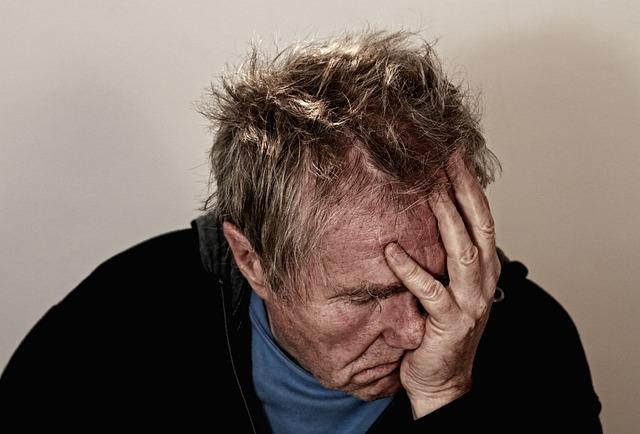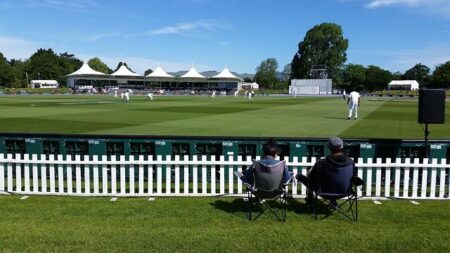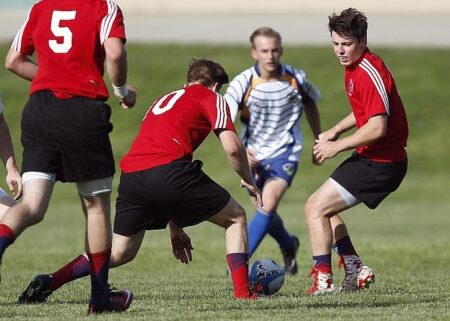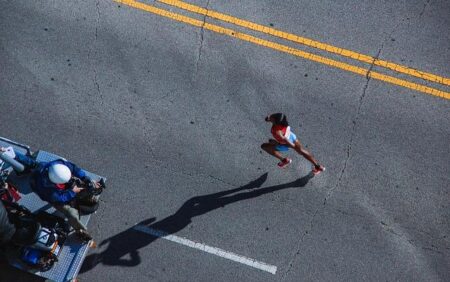Athlete Burnout: College vs. High School Athletes – A Closer Look at Trine University’s Findings
As competitive sports continue to demand higher levels of commitment and performance, athlete burnout has become an increasingly pressing issue among young athletes. Recent studies conducted at Trine University reveal significant differences in the prevalence and causes of burnout between college and high school athletes. This article delves into the university’s latest research, shedding light on how the pressures of academic and athletic responsibilities weigh differently on these two groups and exploring potential strategies to address the growing concern.
Understanding the Causes of Athlete Burnout in College and High School Settings
Burnout in student-athletes stems from a complex interplay of physical, emotional, and psychological factors that differ notably between college and high school environments. High school athletes often face pressure to secure scholarships and prove their potential, resulting in early specialization and intense training schedules that can lead to overuse injuries and mental exhaustion. Conversely, college athletes grapple with heightened academic demands, increased competition intensity, and the struggle to balance personal identity alongside athletic commitments. Both settings contribute unique stressors that erode motivation and performance over time.
Key contributing factors to athlete burnout include:
- High School: Peer and parental pressure, early sports specialization, lack of recovery time
- College: Academic-athletic conflict, scholarship uncertainties, pressure to maintain elite status
- Common to Both: Inadequate rest, coaching styles emphasizing winning over well-being, mental health stigma
| Burnout Aspect | High School Athletes | College Athletes |
|---|---|---|
| Primary Stressor | Scholarship pressure & social identity | Balancing academics & athletics |
| Typical Symptoms | Fatigue, withdrawal from sport | Emotional exhaustion, decreased motivation |
| Preventative Measures | Parental/coaching support, diversified sports | Time management training, mental health resources |
Comparing the Emotional and Physical Impact on Student Athletes
Student athletes face unique challenges that intensify as they transition from high school to college, impacting both their emotional well-being and physical health. High school athletes often juggle academic responsibilities with sports under the watchful eyes of parents and coaches, which can foster a supportive environment but also create pressure to perform. In contrast, college athletes encounter elevated competition levels, increased training demands, and the pressure to maintain scholarships, which can significantly heighten stress and anxiety. Studies show that college athletes report higher incidences of mental health issues such as depression and burnout compared to their high school counterparts, largely due to rigors of balancing sport, academics, and social life.
Physically, the intensity and volume of training differ considerably between the two stages, contributing to varied injury rates and recovery challenges. While high school athletes may experience acute injuries from overuse or sudden impact, college athletes often face chronic overtraining symptoms, including fatigue and musculoskeletal stress. Below is a quick comparison highlighting common emotional and physical consequences experienced at each level:
| Aspect | High School Athletes | College Athletes |
|---|---|---|
| Emotional Stressors |
|
|
| Physical Impact |
|
|
Exploring Support Systems and Resources at Trine University
Trine University champions its student-athletes by offering a comprehensive network of support aimed at combating burnout and enhancing well-being. From personalized academic tutoring to mental health counseling, the resources are tailored to meet the demanding schedules of collegiate athletes. Robust peer mentoring programs connect incoming athletes with upperclassmen who share firsthand experience balancing sport and studies, fostering a culture of camaraderie and resilience.
Key support services include:
- Dedicated Sports Psychologists to address stress, motivation, and performance anxiety.
- Flexible Scheduling for academic commitments, ensuring training does not overshadow education.
- Nutrition and Recovery Programs designed around individual athlete needs to prevent physical and mental fatigue.
| Resource | Focus Area | Accessibility |
|---|---|---|
| Academic Success Center | Time Management & Tutoring | On-Campus & Online |
| Sports Medicine Clinic | Injury Prevention & Rehab | 24/7 |
| Wellness Workshops | Mental Health Awareness | Monthly Sessions |
Strategies to Prevent Burnout and Promote Long-Term Athletic Success
Maintaining balance is crucial for athletes at every level, but it can be especially challenging for young competitors facing increasing pressures. One effective approach involves encouraging time management strategies that allocate specific hours for training, rest, and academic pursuits. Incorporating mindfulness practices, such as meditation and breathing exercises, also helps athletes cultivate mental resilience. Moreover, fostering open communication between coaches, athletes, and parents creates a supportive environment where concerns about stress and fatigue can be addressed early, preventing the spiral into burnout.
Another cornerstone of sustainable athletic success lies in diversity and moderation in training regimens. Limiting specialization at a young age and promoting participation in multiple sports can reduce repetitive strain and maintain athletes’ enthusiasm over time. Clubs and schools that prioritize physical and emotional well-being often include structured recovery days and mental health resources in their programs. The table below highlights key strategies, differentiating how they apply to both high school and college athletes:
| Strategy | High School Athletes | College Athletes |
|---|---|---|
| Time Management | Balancing schoolwork and sports with parental guidance | Self-directed scheduling and academic advising support |
| Cross-Training | Encouraged to try multiple sports | Focused training with recovery emphasis |
| Psychological Support | Access to school counselors and team talks | On-campus mental health services and sports psychologists |
| Rest and Recovery | Parent and coach monitoring of fatigue signs | Structured recovery protocols and self-monitoring |
Future Outlook
In conclusion, the issue of athlete burnout presents distinct challenges for college and high school athletes alike, with varying pressures and environments influencing their experiences. As Trine University’s research highlights, understanding these differences is crucial for coaches, educators, and sports organizations aiming to create supportive frameworks that prioritize athlete well-being. Moving forward, continued attention and targeted interventions will be essential to help young athletes maintain their passion for sports while managing the demands placed upon them.





